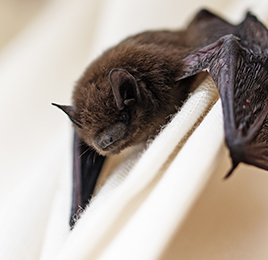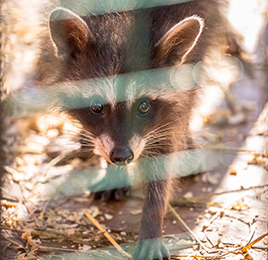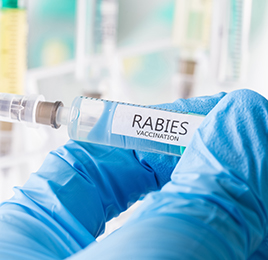
Rabies Toolkit for Healthcare Providers
What is rabies?
Rabies is a deadly virus spread to people from the saliva or neural tissue (i.e., brain, spinal cord) of infected animals. Only mammals can get rabies. Once a person begins showing signs and symptoms of rabies, the disease is nearly always fatal. For that reason, immune globulin and rabies vaccine is recommended under certain circumstances to stop the rabies virus from infecting the body.
Some animals in Cook County are infected with rabies every year, but some are more likely to be infected than others. For example, wild animals (especially skunks and bats) most often get rabies. Rodents (such as squirrels, hamsters, and mice) and rabbits very rarely get rabies.
Local epidemiology
In 2020, some 167 potential rabies exposures and post-exposure prophylaxis (PEP) administrations were reported to CCDPH. Of reported cases: bat exposures accounted for 34%; domestic animals accounted for 12%; other wild species accounted for 8%; and the rest were exposures to unknown species. Only 32% of cases reported met ACIP criteria for PEP administration.
In Illinois, almost all cases of animal rabies occur in bats; however, most bats do not carry rabies. Around 3% of sick or injured bats tested are positive for rabies each year. In 2020, 38 were positive, and six were submitted by Cook County Department of Public Health for testing.
IDPH Rabies Resources
Reporting of animal bites and potential rabies exposures in Illinois
- Animal bites are reportable to Cook County Animal Control .
- Potential human exposure to rabies is reportable to Cook County Department of Public Health, including any administration of rabies PEP, within 24 hours. To make sure that a case is reported to CCDPH, please contact Infection Control at your hospital.
Evaluation &
treatment
Animal quarantine
& testing
Post-exposure
prophylaxis protocol
Additional
resources
Updated December 4, 2024, 4:52 PM





